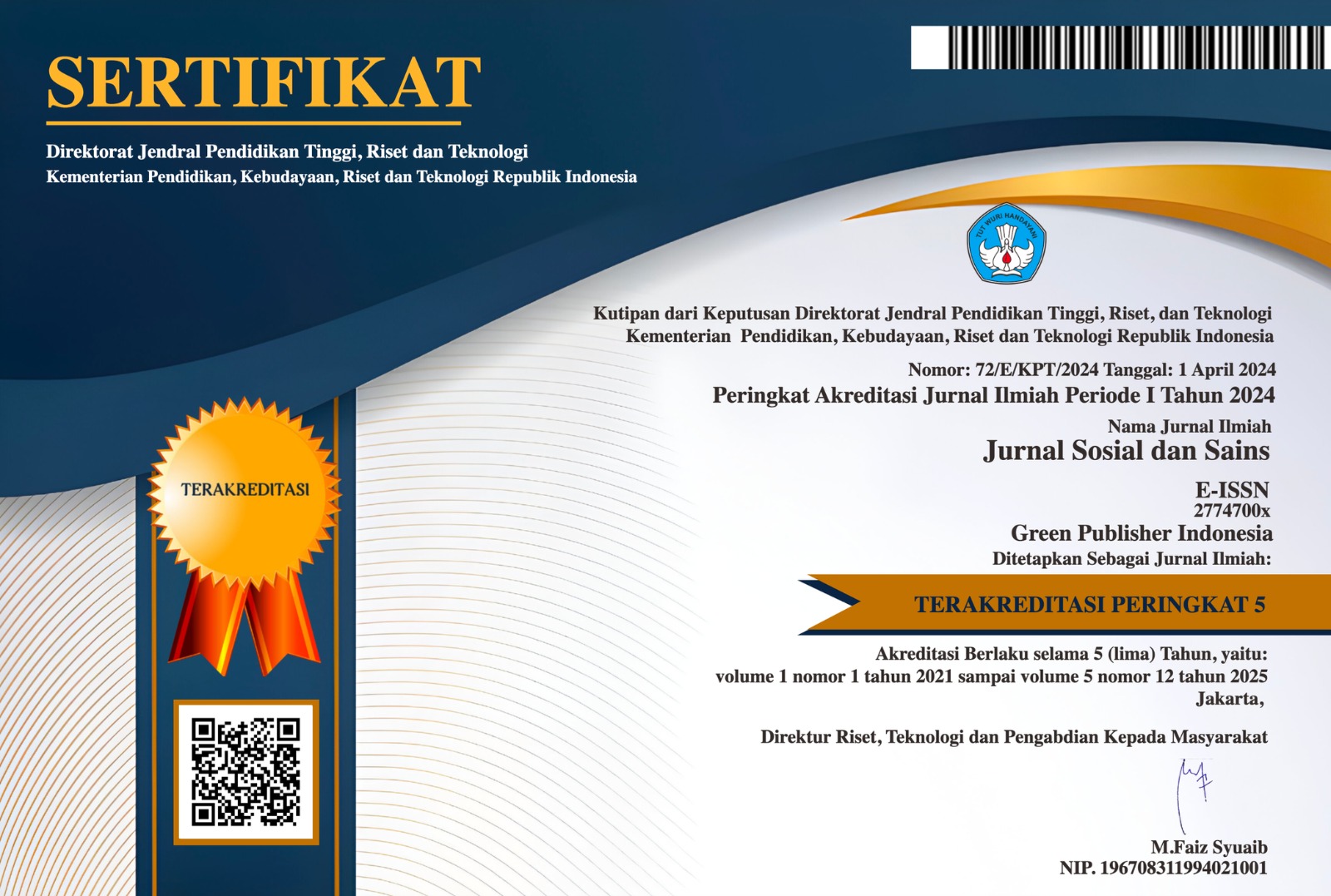Original Research The Effect of Yoga or Nonpharmacotherapy on Dysmenorrhore in Medical Students of Andalas University, Indonesia
DOI:
https://doi.org/10.59188/jurnalsosains.v4i9.1522Keywords:
dysmenorrhea, menstruation, yogaAbstract
Background: Dysmenorrhea is a menstrual pain that is often experienced by young women, with a global prevalence of 16.8-81%. In Indonesia, the prevalence reaches 54.89%, with adolescent girls being the largest group. Treatment generally uses analgesics, but it has side effects. Yoga as a non-pharmacological therapy can reduce pain through muscle relaxation.
Purpose: Analyzing the effect of yoga therapy on the intensity of the degree of dysmenorrhea in female students of the Class of 2018 Undergraduate Medical Education Study Program, Faculty of Medicine, Andalas University.
Methods: This research uses a pure experimental design with a pre-test, post-test, and only group design, with a sample size of 32 people. The research instrument used in the study was a pre-test and post-test questionnaire, which contained VAS scores and guidelines regarding yoga movements. The questionnaire contains a Visual Analog Scale (VAS), which consists of a vertical scale from 0 to 10 cm.
Results: The results showed there were no differences related to age. As many as 18% of respondents usually took analgesics, while 81.3% did not take analgesics to treat dysmenorrhea before yoga therapy. Meanwhile, after yoga therapy, 5 out of 6 respondents who usually consumed analgesics in previous menstrual cycles no longer consumed analgesics, and one respondent still consumed analgesics. Bivariate analysis showed a value of p=0.00 (p<0.05), which means there is a relationship between the provision of yoga therapy and the degree of dysmenorrhea. Where providing yoga therapy can reduce the intensity of pain in respondents who experience dysmenorrhea.
Conclusion: This research concludes that there is a significant relationship between the provision of yoga therapy and the degree of dysmenorrhea.
Published
How to Cite
Issue
Section
License
Copyright (c) 2024 Rifqah Wardah Astarini, Muhammad Zulfadli Syahrul, Mustafa Nour, Beni Indra, Aladin Aladin, Miftah Irramah

This work is licensed under a Creative Commons Attribution-ShareAlike 4.0 International License.
Authors who publish with this journal agree to the following terms:
- Authors retain copyright and grant the journal right of first publication with the work simultaneously licensed under a Creative Commons Attribution-ShareAlike 4.0 International (CC-BY-SA). that allows others to share the work with an acknowledgement of the work's authorship and initial publication in this journal.
- Authors are able to enter into separate, additional contractual arrangements for the non-exclusive distribution of the journal's published version of the work (e.g., post it to an institutional repository or publish it in a book), with an acknowledgement of its initial publication in this journal.
- Authors are permitted and encouraged to post their work online (e.g., in institutional repositories or on their website) prior to and during the submission process, as it can lead to productive exchanges, as well as earlier and greater citation of published work.








